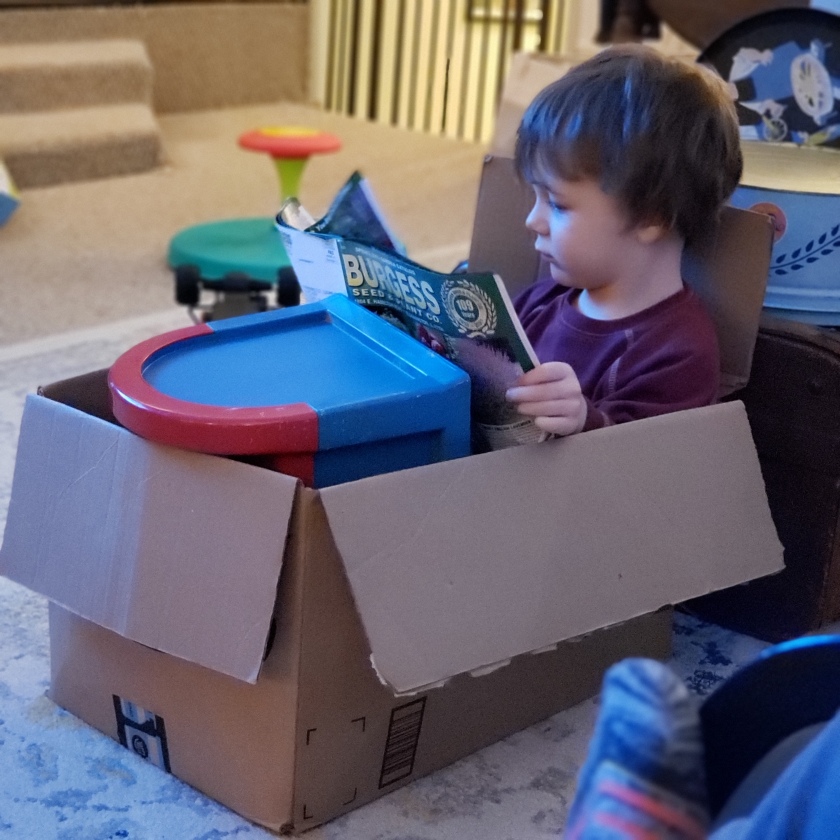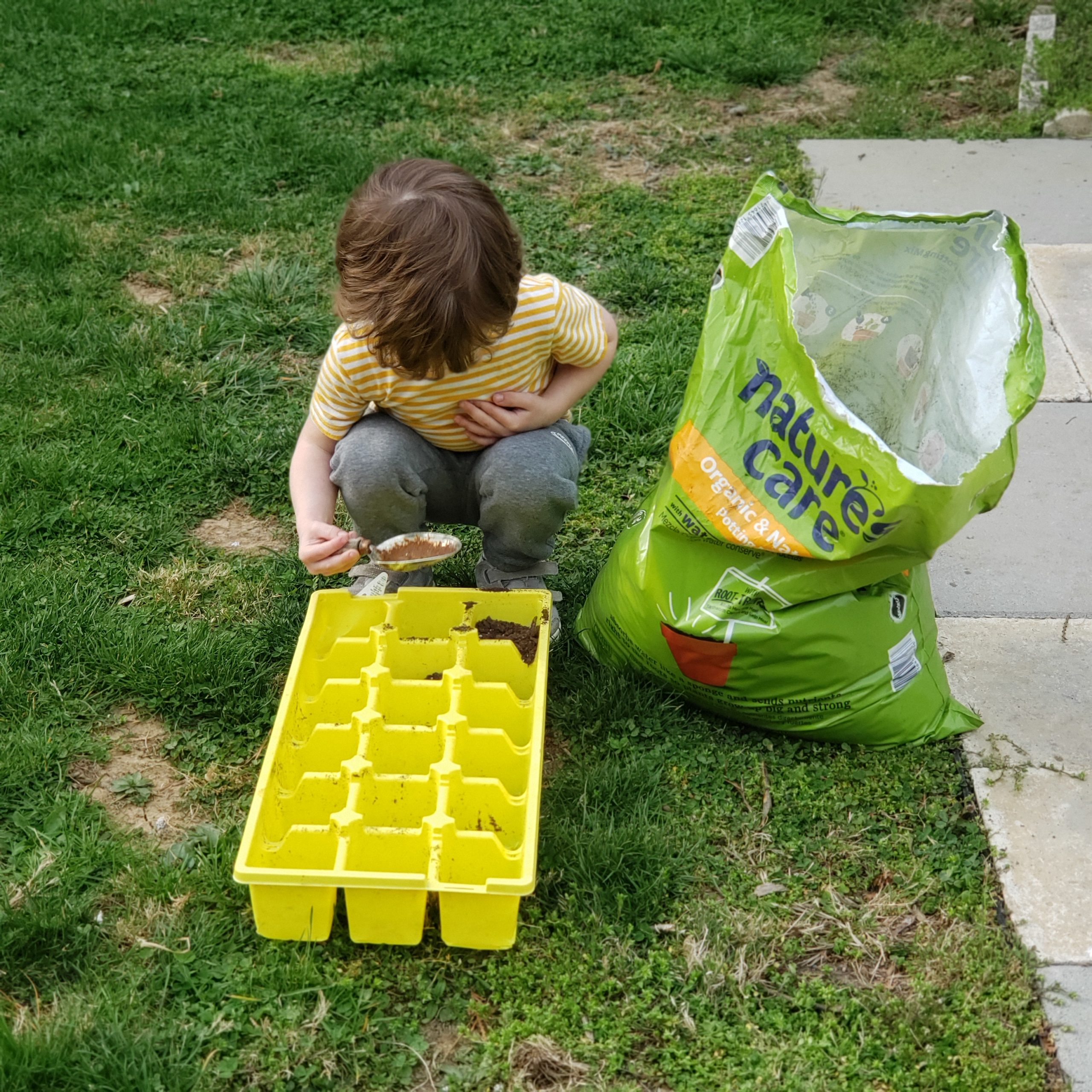- They are both dirty
Let’s face it. Kids are dirty and gardening is also dirty. Kids have zero idea the magnitude of germs surrounding them on a daily basis. We as a society are clean freaks (and since we are in a pandemic, rightfully so) however, dirt itself isn’t necessarily a bad thing. The book, Dirt Is Good by Jack Gilbert and Robert Knight, discusses the various advantages of exposing your child to dirt. One interesting point is about how exposing your child to dirt actually stimulates their immune systems, which in turn, makes them stronger. In small doses, microbes and bacteria in dirt can actually act as a mood enhancer as found in a 2007 study by Live Science. By exposing ourselves and our toddlers to small amounts of dirt, we are not only getting some feel good natural mood enhancers, but also increasing the strength of our immune systems and our abilities to fight diseases. Our immune systems are taking notes and cataloging viruses or bacteria to help our bodies quickly fight off the intruders as we age- even asthma and allergies. Who knew? So get out there and get dirty. Your immune system will thank you.

2. They both require time and patience
Toddlers are both a lovefest and a tantrum factory. Patience and time is such a key virtue when it comes to both parenting and gardening. When we plant a seed, we need to give it water, sun, patience and time. The seed takes weeks to germinate and months to get to fruition. I am personally always amazing at the endless rows of produce at the grocery store. Growing food is hard work, how do farmers produce such beautiful fruit and vegetables?!
Even though our sweet little toddler also needs their water and sun, quality time is sometimes underrated. Toddler care requires a lot of time, this is true. But, what some parents often forget is it is actually the quality of time you spend with your toddler, not especially the quantity. Below are a few ideas of how to spend quality time with your toddler as compiled by the National Association for the Education of Young Children:
- Have a daily “connect” time with your child. Do this face-to-face, if possible; but if this isn’t an option, create a routine for doing so in other ways, such as leaving a note in your child’s lunch bag, posting a note by his toothbrush, or writing an encouraging saying on a shared whiteboard in the house.
- Create a special ritual for you and your child—something that can be done every day. For example, let your child choose and read one book with you at bedtime.
- Tell your child you love her every day. And tell her how important she is to you and how she makes you feel.
- Reinforce positive behavior. For example, if your child completes his chores without your asking, acknowledge it with words of appreciation—even if you don’t have the chance do so until the next day.
- Make and eat meals with your children whenever possible. If time is limited, look for simple meals that require very little preparation, or grab a healthy snack such as an apple and sit for a few minutes and chat with your child.
- Schedule time for doing an activity of your child’s choosing. Be sure to follow through and complete the activity without any distractions.
- Play with your child, even if it’s during bath time or outside before you drop her off at preschool. Every little bit of time makes a positive impact!
- Laugh and be silly with your child.
- Turn off technology when you spend time with your child. Try not to text, answer calls, scroll through social media, or watch television.

3. They both give joy
As stated above, dirt has microbes that actually act as a mood enhancer thus producing all natural joy. Scientists have even gone as far as saying dirt is the new Prozac! Creating a garden gives one a sense of accomplishment- another great avenue to joy town. Toddlers, although they do not have microbes like dirt, also provide natural joy. There are definitely highs and lows with parenting, sometimes within seconds of each other. But hey, that is what makes it good. Just as playing in the dirt can lift you up from a low mood, playing with your toddler can be a great way to share the joy.
Sharing activities with your toddler not only creates a joy and connection, it can also boost your child’s language skills, fine and gross motor skills, and social emotional skills too. Many reasons for joy! Check out this amazing plethora of indoor activities from whatmomslove.com.
remember, not all games and activities need to be complicated or planned. Sometimes just having an empty box around can provide your toddler hours of enjoyment!

Just a toddler, sitting in a box with his step stool, reading a gardening magazine.
If that is not pure joy, I don’t know what is…
4. They both need variety to thrive
When we plant a garden, there is a lot of planning involved. We have to choose the correct location, making sure it gets the right amount of sun and and has the right kind of soil. We also have to map out where we are going to place the plants themselves. In the more traditional garden, we plant seeds row by row. However, plants can actually work together and benefit one another if grown intermixed together, something known as companion gardening. The farmers almanac reports that interplanting your vegetables creates biodiversity. Take the example of the ‘three sisters’ used by Native Americans. In the three sisters, one plants corn, beans, and squash together as a trio. Three sisters creates a symbiotic relationship between the plants.
According to the Farmers Almanac, “Each of the sisters contributes something to the planting. Together, the sisters provide a balanced diet from a single planting.”
- The corn offers the beans necessary support acting as a trellis
- The pole beans, pull nitrogen from the air and bring it to the soil for the benefit of all three.
- As the beans grow through the tangle of squash vines and wind their way up the cornstalks into the sunlight, they hold the sisters close together.
- The large leaves of the sprawling squash creates living mulch that shades the soil, keeps it cool and moist and prevents weeds.
- The prickly squash leaves also keep away raccoons and other pests, which don’t like to step on them.
How amazing is that?!?

Your toddler also needs variety to become a well balanced individual. If only it were as easy as planting the three sisters! It is no doubt that children thrive when given a predictable and solid base, but kids are akin to sponges and benefit from variety of stimuli and activities.
You would be amazed at how you can intermingle core learning into everyday activities. Using multisensory approaches, you can work on fine motor skills as well as speech and language skills with one activity. For example: the below activity can be found in an earlier blog and works on fine motor skills, speech and language skills, and provides sensory input.

https://wordpress.com/post/thenurturenotebook.com/254
Another great way to add variety into your toddler’s life is to give them small jobs. Allow them to help sort the laundry while working on counting and colors. My toddler loves to help me take out the trash by pushing the garbage can down to the sidewalk. I use this time to work on counting and basic concepts such as pull/push, in/out, and go/stop. Experiences that are boring and mundane to us are new and fresh to your little one. And who knows, by including them in these mundane tasks, you may even find something new and fun about them too. (Except the laundry activity, laundry is the worst)
5. They both need to be ‘weeded’ now and then
This one may seem like a stretch and sound a little silly, but sometimes your toddler needs to be weeded, not literally. As I said earlier, toddlers are like little sponges taking in ALL of the information around them both good and bad. We, as parents, need to ensure that the good stays and the bad gets weeded out. It is completely up to you, as the parents, to determine which is which. There are no rules around this, just what aligns with your life.
There are a few really great techniques to help with shaping your toddlers behavior in a positive way. The first one is aptly called positive reinforcement. The idea of positive reinforcement is that you catch your toddler ‘being good’ and praise them. Sounds simple, right? For example, your toddler puts their shoes back in the closet after they wear them. You say, ‘Wow! I love how you put your shoes in the closet! Well done!’ (Seriously, make a huge deal of it) This will increase the likelihood of them repeating the action. Plus, this is so much better than yelling at them for NOT putting their shoes in the closet later. This strategy can also work with older kids and *cough* husbands too.
Healthy children.org has another great technique to shaping your toddler’s behavior. Modeling. I know I keep saying this, but your child is literally WATCHING you (like a stalker). They don’t especially have the language to understand what you are saying, but they most certainly have the ability to attempt to imitate what you are doing. Modeling positive ways to calm down, encouraging your child to label their feelings, labeling your own feelings, and pointing out good behavior you see in others speaks volumes more than simply saying ‘don’t do that’. This is HARD. It is important to remember that no one is perfect and we are all learning every day.

The rules are yours. Parenting can be dirty, joyful, and may need to be weeded every now and then. Focus on the joy and you may find more than you even realize.
References:
https://www.treehugger.com/how-playing-in-dirt-boosts-your-health-4864469
https://www.npr.org/sections/health-shots/2017/07/16/537075018/dirt-is-good-why-kids-need-exposure-to-germs
https://www.naeyc.org/our-work/families/spending-quality-time-with-your-child
https://www.almanac.com/content/three-sisters-corn-bean-and-squash
https://www.healthychildren.org/English/family-life/family-dynamics/communication-discipline/Pages/How-to-Shape-Manage-Young-Child-Behavior.aspx
Your Nurture Notetaker
Jaime Sinift- Heimer M.S. CCC-SLP/L
